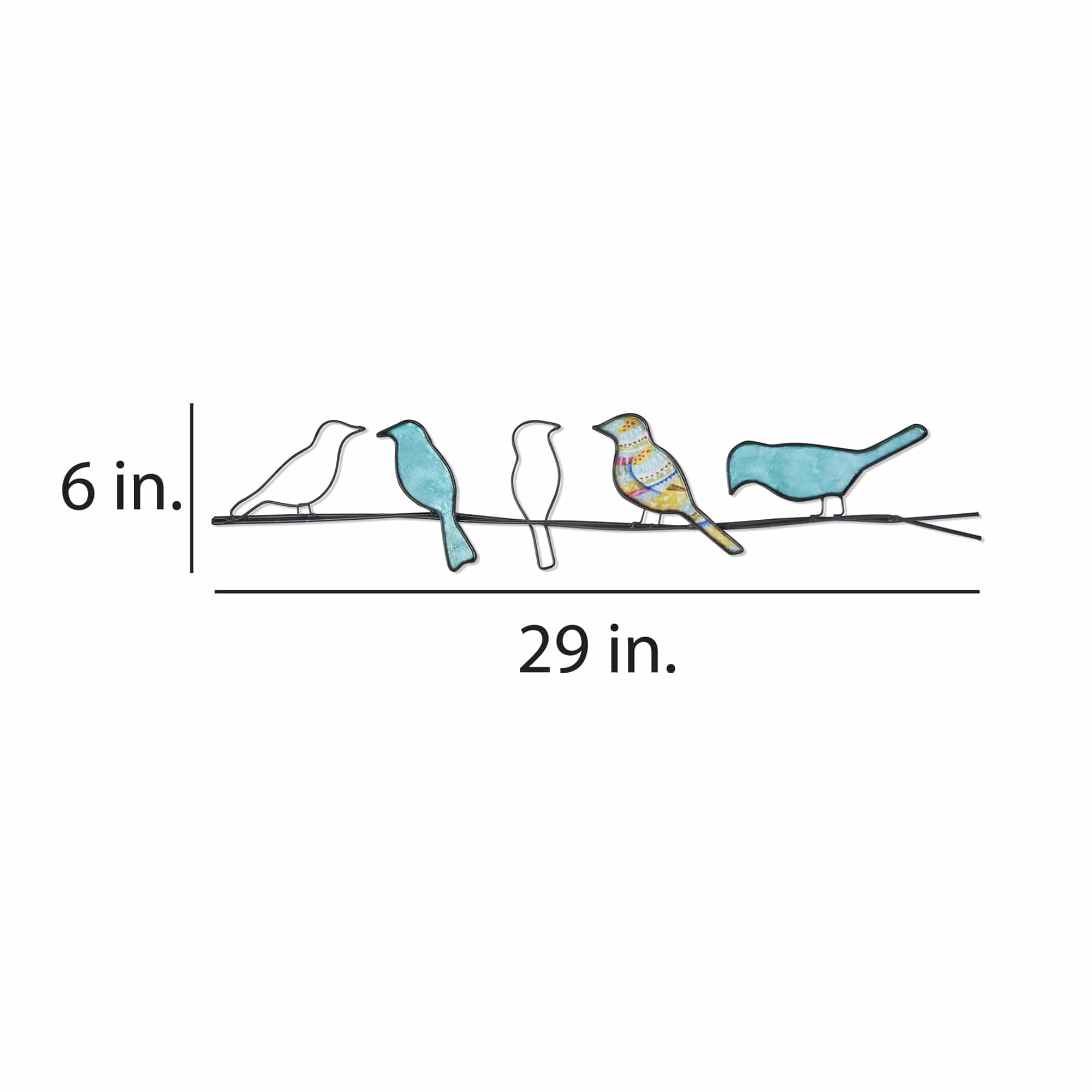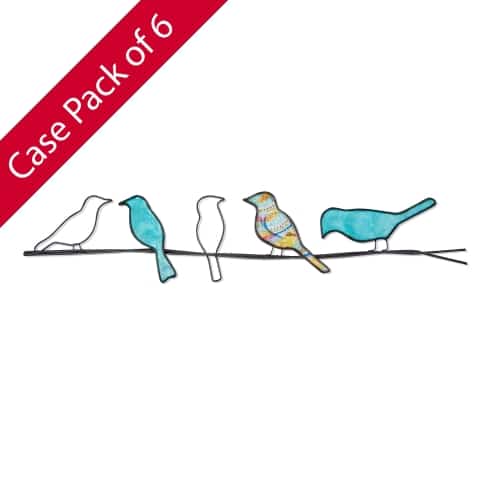-

 Case of 6 An old parable states that five birds were resting on a wire. Two decided to fly south. How many were birds are left? One's initial answer may be three, however, the answer is still five. The moral of the fable is actions are more important than intention; a kind reminder that a truer picture of one's character is drawn by actions. The artisan captures this parable by lining up five birds socializing on a wire. The basic frame of this piece is created using tin, which is powder coated with a black finish. The frame is reinforced using tin wire along the inner edge. The front of the body is adorned with capiz. Capiz is an oyster shell and the primary purpose of the oyster is as a source of food. However, the by-product, the shell, can be used for decoration. Due to it being a natural material, the natural colors of the capiz may come through as tans and browns underneath the hand-painted surface.
Case of 6 An old parable states that five birds were resting on a wire. Two decided to fly south. How many were birds are left? One's initial answer may be three, however, the answer is still five. The moral of the fable is actions are more important than intention; a kind reminder that a truer picture of one's character is drawn by actions. The artisan captures this parable by lining up five birds socializing on a wire. The basic frame of this piece is created using tin, which is powder coated with a black finish. The frame is reinforced using tin wire along the inner edge. The front of the body is adorned with capiz. Capiz is an oyster shell and the primary purpose of the oyster is as a source of food. However, the by-product, the shell, can be used for decoration. Due to it being a natural material, the natural colors of the capiz may come through as tans and browns underneath the hand-painted surface.






